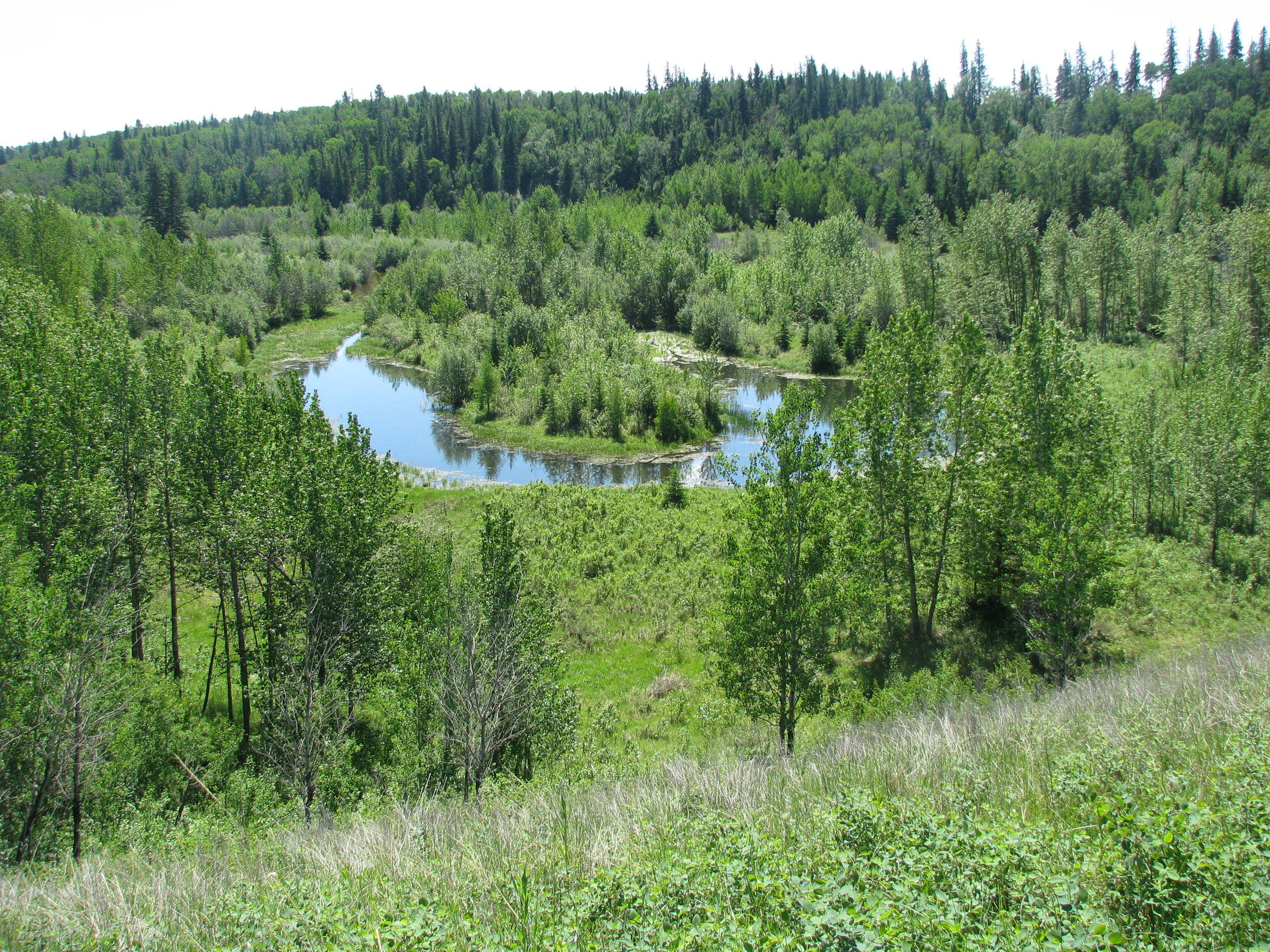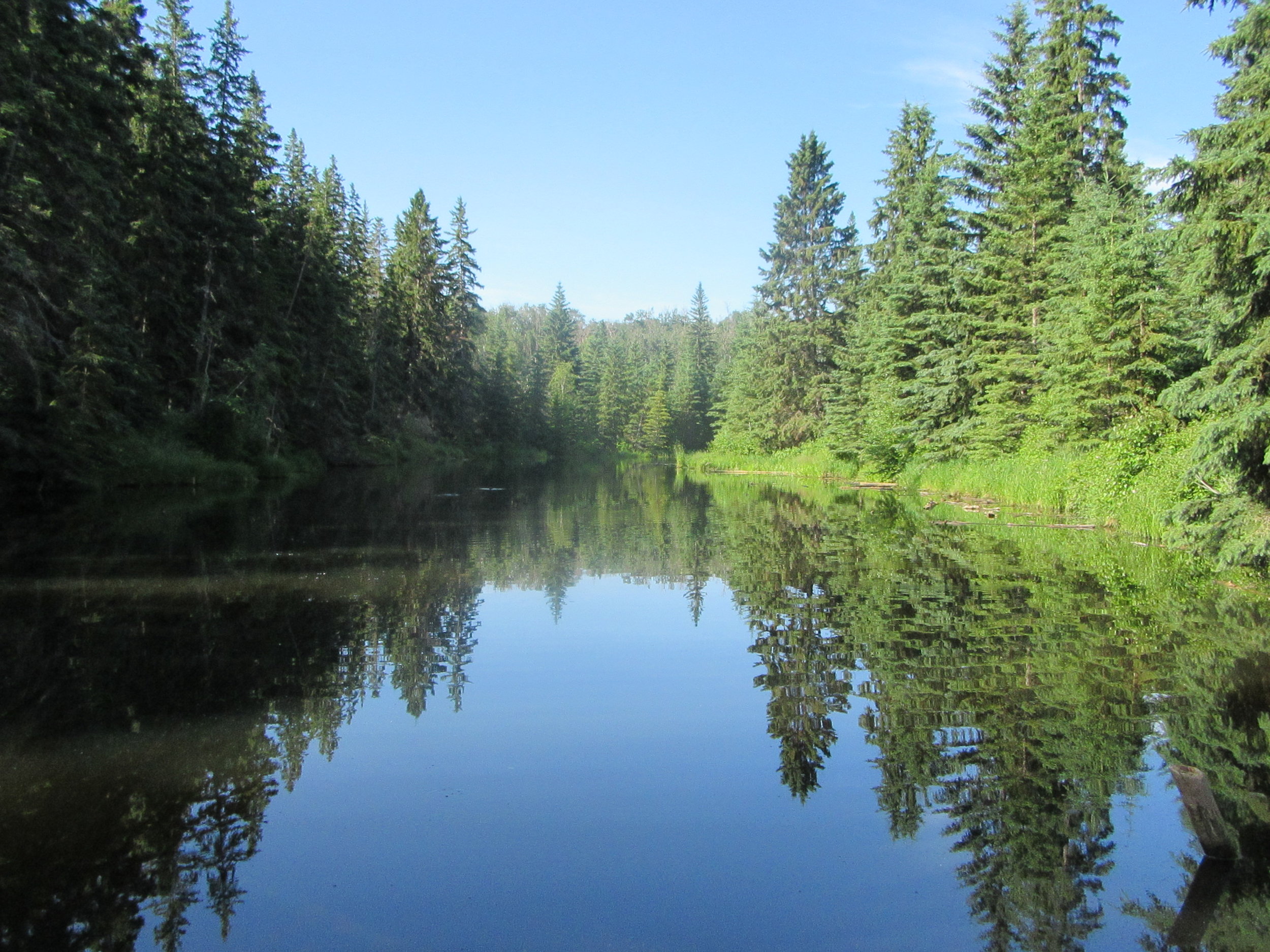What is an Oxbow Lake?
An oxbow lake is a free-standing waterbody that forms from wide curves (meanders) in a river channel. They are also called horseshoe lakes, loop lakes and cut-off lakes. Over time, a river or creek may find a shorter course through the process of removing meanders. The corners of the meander closest to each other, called concave banks, slowly erode sediment and eventually pinch together. The banks opposite concave banks are called convex banks, and silt and sediment is deposited here. The bend in the river is cut off from the main channel through this process of sediment erosion and deposition, and an oxbow lake forms. Over time, they may become swamps or bogs, or even dry out if when the water evaporates and vegetation takes over. Oxbow lakes can form naturally or they can be anthropogenic. Naturally occurring oxbow lakes typically form in flat, low-lying plains. Sometimes, river straightening is desired to improve navigation or mitigate floods, resulting in anthropogenic oxbow lakes.
Watch this video for a great explanation about how oxbow lakes form.
Ecosystem Functions
Oxbow lakes provide ecosystem functions such as greenhouse gas and nitrogen mitigation, recreation and wildlife habitat. For example, oxbow lakes in the Lower Mississippi Valley provide habitat to around 50 species of mammals, 45 species of reptiles and amphibians, 37 species of mussels, 100 species of fish and 60% of all bird species in the contiguous U.S.
The age and physical characteristics of an oxbow lake affects species richness and abundance. A study by Obolewski (2011) found that open oxbow lakes (those still connected to the river) had higher invertebrate species richness than closed (isolated) oxbow lakes. Generally, it has been found that there are more invertebrates in oxbow lakes than in watercourses, regardless of oxbow-river connectivity. Oxbow lakes are valuable nurseries for fish spawning. Young oxbow lakes are frequently flooded and undergo high nutrient exchange during flood pulses. In addition, they are close to the river channel, and maintain high connectivity and depth. These factors allow for impressive fish biodiversity in young oxbow lakes. As the lakes age and become vegetated, they tend to become shallower and isolated from the main river. This results in lower dissolved oxygen and higher water temperatures, adversely affecting fish survival. Thus older oxbow lakes often have lower fish species richness and abundance. On the other hand, anthropogenic oxbow lakes are a unique case. Whereas natural oxbow lakes form gradually over time, anthropogenic oxbow lakes are severed from the main channel when the lake ecosystem is in advanced stages of succession, making them unpredictable and unsuitable habitats for fish.
EALT's Pipestone Creek Conservation Lands is adjacent to an oxbow lake, and there is an oxbow lake inside of Larch Sanctuary. Both offer important habitat for wildlife, as well as view scenic views!
Using Technology to Inventory Oxbow Lakes
It is important to inventory the distribution and extent of oxbow lakes to communicate their importance to the public and conservation agencies. However, it can be difficult to determine the physical characteristics of these lakes as there is no clear distinction of when it stops being a lake and turns into a wetland. There are helpful technologies that can help compile an inventory despite the challenges. Images produced by Landsat satellites can document changes to landscape conditions over a long period of time. Using geographical information system (GIS) to analyze these satellite images, the lake size, shape, depth and surrounding land use can be estimated. Inventories of oxbow lakes are invaluable for conservation, research and management applications. One of the tasks that EALT will be undertaking for Larch Sanctuary’s oxbow lake, is studying the alterations in this lake, water quality, and other changes.
By: Rannee Liu, SCiP intern



